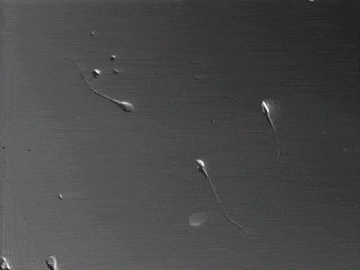Sperm 'booster switch' could lead to unisex contraceptive
Sperm cells, as it turns out, can become 'hyperactive'. A new study published in the journal Science has revealed that a particular enzyme on their tails responds to the female sex hormone progesterone, activating a 'power kick' that boosts their swimming speed. The body produces various hormones all the time for different purposes. Progesterone is released, for example, just prior to and at the onset of pregnancy, particularly to prepare the uterus for the implantation of the embryo.
Biologists have long suspected that progesterone affects the progression of sperm towards the unfertilised female egg, but the receptors that respond to it have proven elusive.
What has been clear is that when the sperms’ entry into the fertilising layer of an egg cell takes place, they suddenly swim far faster and their tail movements become forceful and erratic. This last dash towards the unfertilised egg, designed to give them enough energy to penetrate its outer layer, is an event known as 'hyperactivation'.
A recently developed technique, wherein incredibly small electrodes are attached to the tails of sperm, was used by an earlier study to record their reactions to various hormones.
This appeared to reveal that CatSper, a sperm tail calcium receptor, responds to calcium ions in and around the egg. The meeting of CatSper and these calcium ions seems to stimulate the little critters to swim with a “power kick” towards their final goal.

Miller et al./UC Berkeley
However, the research team behind this new study suspected that this interpretation may be slightly erroneous. They thought that the progesterone was binding to something else that, in turn, stimulated CatSper.
The team, using the same small electrodes, noticed that the progesterone binds to an enzyme called ABHD2, which removes a fatty sheath on the nearby CatSper receptor. Now this receptor is no longer bound by the sheath, it responds to the calcium ions and becomes hyperactivated.
The researchers suggest that the initial inhibition of CatSper is there for a good reason: to prevent sperm from using up all their energy swimming insanely fast too early on and not making it to the egg.
“People tend to think of fertilisation as like a marathon, where the fastest, most powerful sperm is going to win,” said Melissa Miller, a postdoctoral fellow at both the University of California (UC) Berkeley and UC San Francisco, and the lead author of the study.
“We think of it like the Tour de France, where the first sperm clear the way, expending their energy to break through the barrier cells, allowing the slower ones behind to pass into the egg".
In 80% of male infertility cases, doctors are unable to identify a cause, which highlights how little is known about fertilisation on a molecular level. Having identified the true activation mechanism behind the hyperactivation of sperm, this study could lead to new treatments that cure certain men of infertility.
Alternatively, this research could lead to the production of a new unisex contraceptive. By flooding either the man or woman with a drug that prevents hyperactivation, the sperm will ultimately never break through the egg’s barrier cells and reach their target.





